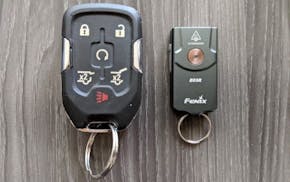Honda has always had an almost supernatural ability to effortlessly create economy sedans with modern, conservative designs and distinctly athletic personalities.
So, when the redesigned Honda Civic arrived in 2012, it should have been expected that Honda would deliver more of the same. Unfortunately, the new Civic was so unimpressive that even Consumer Reports dropped the car from its list of recommended cars.
What happened?
Well, it seems that Honda, which designed the car during the recession, cheapened the interior in an effort to control costs and keep the price low. Coupled with uninspired styling and ho-hum handling, the accolades usually strewn in the Civic's path became brickbats. In the wake of massive criticism of its 2012 redesign, Honda launched an emergency redesign of their newly unveiled Civic.
Given the increased competition in the compact car market from such strong competitors as the Hyundai Elantra, Ford Focus, Chevrolet Cruze and Volkswagen Jetta, it was clear Honda needed to quickly upgrade the Civic.
Yet the company has somehow managed to restore much of the Civic's quality in a mere 12 months. Given that it takes three years or more to redesign a vehicle, that's not just remarkable, it's, well, supernatural.
The most obvious change to the Civic is what you see: the car's front end is much more aggressively chiseled, with a black honeycomb mesh grille framed in chrome. It's a handsomely sporting look that's fresh, yet classically Honda. Out back, the lighting and trim has a more impressive appearance.
But it's inside where buyers will find the most dramatic change.
Given the previous model's functional, dull aesthetic, the new interior is a return to form. With its upgraded trim and livelier color palette, it's easy to appreciate this car's roomy cabin and comfortable seats. Soft-touch plastics and upgraded materials decorate the doors and instrument panel. In particular, the finishes on the audio system are improved.
Honda now offers a host of new standard features in response to those offered on its competitors. Bluetooth, a rearview camera, USB/iPod interface, Pandora interface, steering wheel-mounted audio controls, exterior temperature readout and a sliding center armrest are standard on all Civics. A navigation system is standard on upper trim levels.
But Honda should take another look at the front seat headrests; they're placed too far forward, preventing you from sitting properly in the seat.
Choosing a new Civic means starting with the LX, and then jumping to EX, EX-L or Si. There's also a high-efficiency HF model, as well as a gas-electric hybrid and a model that runs on compressed natural gas. The DX trim level has been dropped.
With all of the work on aesthetics, it's understandable that the Civic's powerplants carry over unchanged. A 140-horsepower, 1.8-liter four-cylinder engine mates to either a five-speed manual or five-speed automatic transmission. A six-speed manual transmission is standard the Si; a continuously variable automatic transmission is standard on the hybrid.
Unlike some competitors, the five-speed automatic doesn't have sequential manual shift capability or paddle shifters mounted on the steering wheel.
Regardless, fuel consumption is very respectable, with the Civic rated by the EPA at 28 mpg city, 39 mpg highway. A mix of two-thirds highway driving and one-third city driving returned 34 mpg.
In order to aid you in reaching those Olympian fuel efficiency heights, Civics come with an Econ button that, when pushed, operates the vehicle more efficiently, albeit at the expense of performance. Honda also frames the digital speedometer in green light, which stays green as long as you're driving efficiently. Drive like an auto journalist, and you'll find the lights turn teal, and then blue.
For this road test, Honda supplied an EX with an automatic transmission, which is typical of what most buyers will opt for.
And it's here, behind the wheel, where the Civic delivers one more surprise. This redesign is more than smoke and mirrors.
Honda has recalibrated the steering for a livelier response, and it possesses an eagerness and athleticism that was lacking last year. The Civic has regained the poise it always had, despite being a front-wheel drive economy car. The tweaked suspension does a better job of reining in body roll during cornering. The ride is still firm, but there's now an ample amount of bump absorption dialed in, so it seems less jittery than it did last year. Steering is still fairly light, however, and there's still a dead spot when the steering wheel is centered.
On the flip side, the 2013 Civic seems quieter than the old model.
Since the engines carry over from last year, performance is similar. Given its fuel-efficient ways, there's adequate power for the daily stop-and-go grind of commuting and shopping, but dropping down into third gear is needed for that extra burst of power.
The Civic performed flawlessly during the weeklong test drive with one exception. Its Bluetooth system had difficulty maintaining its connection to my iPhone. It disconnected and reconnected multiple times during a typical four-hour drive.
In many respects, when compared with the 2012 model, the 2013 Civic is greatly improved, not just in ride and handling, but also in overall ambiance.
While the 2012 Civic wasn't a contender, the 2013 model most definitely is. It's not the class leader its forbearers once were, but it's now good enough to once more proudly wear the Honda name and give its competition heartburn.

Motormouth: Oil type not an issue



